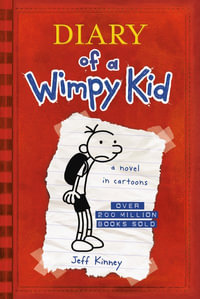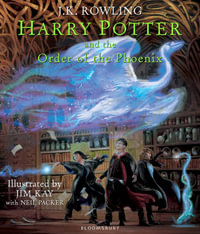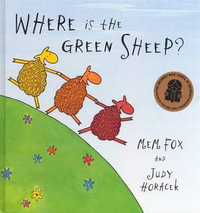A Mexican girl and a black boy begin an ill-fated love in the months leading up to a catastrophic 1937 school explosion in East Texas. The powerful story opens with the legendary school explosion in New London and then rewinds to September 1936. Naomi has begrudgingly left behind her abuelitos in San Antonio for a new life with her younger half siblings, twins, and their long-absent white father, Henry. Now a born-again Christian, Henry struggles to atone for his sins. The siblings struggle to fit into the segregated oil town, where store signs boast 'No Negroes, Mexicans, or dogs.' The precocious twins read better than half the senior class, and dark-skinned Naomi is guilty of not only being Mexican, but also of being 'prettier than any girl in school.' Their one friend is Wash, a brilliant African-American senior from the black part of town. Perez deftly weaves multiple perspectives including Henry and 'the Gang, ' the collective voice of the racist students into her unflinchingly intense narrative, but the story ultimately belongs to Naomi and Wash. Their beautifully detailed love story blossoms in the relative seclusion of the woods, where even stepfathers can't keep them apart. But as heartbreaking events unfold, the star-crossed lovers desperately hope that any light can penetrate the black smoke cloud of darkness spreading around them. A powerful, layered tale of forbidden love in times of unrelenting racism. starred, Kirkus Reviews
-- "Journal"
Perez's latest--following What Can't Wait (2011)--is a powerful work of historical fiction set in New London, Texas, that revolves around events leading up to the horrific 1937 school explosion that killed close to 300 people. This gripping story centers on high-school senior Naomi, a Mexican American girl who recently arrived from San Antonio with her half siblings, twins Beto and Cari, and their father, oilfield worker Henry. Naomi's struggle to learn how to take care of the household chores is complicated by her dark past with Henry and the overt racism she faces in the segregated town. She reluctantly befriends and then falls in love with an African American boy, Wash, who is both brilliant and kind to her younger brother and sister. Perez's skillful use of multiple perspectives creates a full and well-rounded sense of place and story. Elegant prose and gently escalating action will leave readers gasping for breath at the tragic climax and moving conclusion.--Booklist
-- "Journal"
The beauty of Perez's prose and her surefooted navigation through the dangerous landscape of the East Texas oil field in the late 1930s redeem the fact that anyone who dares read this agonizing star-crossed love story will end up in about six billion numb and tiny pieces. Absolutely stunning. --Elizabeth Wein, author of Code Name Verity and Michael L. Printz Award Honoree
-- "Other Print"
The novels that burn into our minds as young adults often involve horror of some kind. A mere mention of All Quiet on the Western Front or I Am the Cheese, and I'm right back to brooding again in the ocean-deep emotions of my adolescence. What is that urge, the desire to soak in anguish and injustice as we come of age? Whatever it is, Ashley Hope Perez's new novel, Out of Darkness, fills the need. Her layered tale of color lines, love and struggle in an East Texas oil town is a pit-in-the-stomach family drama that goes down like it should, with pain and fascination, like a mix of sugary medicine and artisanal moonshine. I actually had to close the book at one point to seek respite with Facebook. And puppies.
When I dove back in a few days later, it was hard not to marvel at the book's potency. Perez, who has spent much of her career teaching, sets her story against the 1937 New London school explosion, the worst school disaster in American history, which killed 294 people. But the blast is only one of this book's horrors, and not the one that hurts the most.
Her story is about race--about gradients and forbidden crossings. Our guide is Naomi, who starts out seeming no more than 13 but who could be as old as 18 (one of the book's distractions is its loosey-goosey approach to age). She's defined as Mexican in the Texas of her era, and though she is bilingual and attractive, she is darker-skinned than her two younger half siblings, Beto and Cari, who have a white father named Henry who has just called them all to New London.
Their mother, Estella, has died. Henry has convinced Naomi's grandparents that he can give all three children a better life in the scrum of an oil boom, with a new school where students receive band instruments, sports uniforms and new books.
Beto and Cari, who are twins, thrive. They can pass as white. Naomi struggles. Though allowed to attend the school, she is just another 'dirty Mexican, ' rebuffed by whites and turned into a housekeeper by Henry.
There is only one person who keeps Naomi from despair: Wash, a black boy who fishes at a bend in the river that the twins adore. Cari, confident and mischievous, and Beto, more contemplative, take to him first. We are meant to believe the twins are too young to notice the racial dynamics around them, though they are old enough to read--a proposition that at times stretches credulity.
Wash, while drawn with charm and verve, also seems a little too ideal; one too many of his apparent flaws turn out to be a virtue. But what works are the relationships between Wash and Naomi and Wash and the twins. Out of Darkness nurtures their connections with approachable prose, letting the characters glide between childhood and all that follows. Naomi and Wash find a private place to work out their emotions and urges.
All of which makes the final third of the book so hard to bear. Naomi and Wash are happy alone, for a spell. But Wash is a charismatic son of strict strivers--his parents have made no secret of their expectation that he go to college--and he cannot fully ignore the racism around him. One of the most ominous scenes occurs when Wash and his father visit New London's white school superintendent with a plan to save money for their struggling school. While Wash speaks up with measured boldness, his father, an otherwise proud man, glares at his son and turns submissive. 'What my son means to say is that we're keen on improving the level of education at New London Colored School, ' he tells the superintendent. 'Sure want to be a credit to the county.'
Given the current experience of race in America, in which black Americans continue to be killed after questioning white authorities or fleeing, the exchange is an acute reminder that race has always been a function of power, as recent books by Ta-Nehisi Coates and others have driven home.
Indeed, escaping from the forces that have shaped the United States for centuries proves impossible for Naomi, for Wash, for the twins and for Henry. The end of the book careers from one threat to another, but the conclusion is never in doubt: New London blows up, shudders and collapses. A tragedy, real and racial, swallows us whole, and lingers.--The New York Times Book Review
-- "Newspaper"
The tale's layered plot begins with a prologue set hours after an actual deadly U.S. school disaster in New London, TX in March 1937. Readers are plunged into the grief and horror of the moment long enough to meet important protagonists and wonder at the event before being transported back to September 1936. From this point, the book focuses primarily on Naomi, a 15-year-old of Mexican heritage, and her younger biracial twin half-siblings. Recent arrivals from San Antonio, the children are all living with the twins' white father, and Naomi is forced to navigate the racially divided oil-mining town, learn to run a household, and to face her increasing interest in an African American youth. This third person story, recounted in multiple perspectives, slowly discloses the origins of the teen's apprehension for the recent transition. The insertion of black-and-white photos and stark black pages interrupt the narrative much like the metaphoric explosions in the lives of the diverse protagonists. Additionally, an increased use of white space leading to the book's climax seems to slow, and almost stop time. This book presents a range of human nature, from kindness and love to acts of racial and sexual violence. The work resonates with fear, hope, love, and the importance of memory. The author's note and acknowledgements pages give more background on the disaster. VERDICT: Set against the backdrop of an actual historical event, Perez's young adult novel gives voice to many long-omitted facets of U.S. history. starred, School Library Journal
-- "Journal"
























